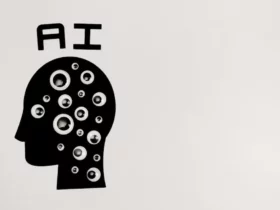Web design stands as a critical element in shaping the online presence of businesses, organizations, and individuals alike. It encompasses a wide range of skills and disciplines aimed at creating and maintaining websites that are not only visually appealing but also user-friendly and accessible to all. This guide aims to provide a comprehensive overview of web design, covering its fundamental principles, the variety of techniques employed by professionals, and its overarching purpose — to engage and communicate effectively with an audience. Through this exploration, readers will gain insights into how web design influences user experience, brand perception, and ultimately, the success of a website in fulfilling its intended goals.
1. The Relationship Between Web Design and User Experience (UX)
Understanding the intricate relationship between web design and user experience (UX) is essential for creating sites that users love to interact with. Good web design is not merely about aesthetics; it’s about building a seamless, intuitive user journey on a website. UX design focuses on optimizing the website for ease of use and ensuring that users can find what they’re looking for with minimal effort and confusion. This involves careful planning of the site’s architecture, navigation, and the way information is presented.
To achieve a positive UX, web designers must empathize with their users, understanding their needs, preferences, and challenges. Tools like user personas, user flow maps, and usability testing become invaluable. Enhancing UX through responsive design, faster load times, and clear call-to-action buttons can significantly reduce bounce rates and improve conversion rates, demonstrating the powerful impact of UX on web design outcomes. The people at Sunlight Media note that working with a professional web designer can help businesses and organizations create sites that are not only visually appealing but also highly functional and optimized for user experience. It’s a crucial investment that can lead to long-term success and customer satisfaction.
2. The Importance of Visual Design in Web Design
Visual design plays a pivotal role in web design, strongly influencing how users perceive a website. It encompasses the use of color, images, typography, and layout to create an aesthetically pleasing and coherent look that aligns with the brand’s identity. A well-thought-out visual design can capture users’ attention, make a strong first impression, and contribute to brand recognition. Understanding the psychology of color and typography can help designers convey the right emotions and messages.
However, a visually stunning website must also be functional. Designers face the challenge of balancing creativity with usability, ensuring that the website’s artistic elements support its usability goals. For instance, a clean layout with ample white space can improve readability, while consistent use of colors and fonts can enhance navigability. Ultimately, successful visual design in web design not only delights the eye but also facilitates a smooth user experience.
3. Responsive Web Design: Adapting to a Mobile-First World
Responsive web design has become non-negotiable in a world where people increasingly rely on smartphones and tablets to access the internet. It ensures that a website looks great and functions well on devices of all sizes, from desktop monitors to mobile phones. By using flexible layouts, images, and cascading style sheet (CSS) media queries, designers can create a single website that dynamically adapts to the user’s device, improving accessibility and user experience.
The shift towards mobile-first design reflects the changing patterns in web usage. Google’s emphasis on mobile-friendly websites in its search ranking algorithms underscores the importance of responsiveness for SEO strategies. Designers must therefore prioritize responsiveness from the outset, considering factors like touch interfaces, screen sizes, and on-the-go access to ensure that mobile users enjoy a flawless browsing experience, just as much as desktop users do.
4. Web Design Tools and Technologies
To bring creative visions to life, web designers utilize a variety of tools and technologies. From graphic design software like Adobe Photoshop and Sketch to coding languages such as HTML, CSS, and JavaScript, the toolkit of a web designer is vast and varied. Each tool serves a specific function, from creating visually stunning graphics to animating elements and ensuring a website is technically sound and interactive.
Staying up-to-date with the latest tools, frameworks, and trends is crucial for web designers. Emerging technologies like CSS Grid and Flexbox offer new possibilities for layout design, while content management systems (CMS) like WordPress make it easier for non-technical users to manage their sites. Web design is a constantly evolving field, and continuous learning is key to staying ahead in the industry.
5. Enhancing Accessibility in Web Design
Accessibility in web design is about ensuring that websites are usable by everyone, including people with disabilities. This includes designing websites that are navigable through keyboard-only commands, readable by screen readers, and compatible with various assistive technologies. Web accessibility also pertains to creating content that is understandable and engaging for users with different types of cognitive impairments.
Adhering to the Web Content Accessibility Guidelines (WCAG) is a step toward creating more inclusive digital spaces. By incorporating accessibility principles from the beginning, designers can avoid the need for retroactive modifications, which can be costly and complex. More importantly, enhancing accessibility broadens a website’s reach, opening up content and services to a wider audience, and demonstrates a commitment to equity and inclusivity in the digital realm.

Web design is a multifaceted discipline that requires technical expertise, creative flair, and a deep understanding of user psychology. By considering the principles and techniques discussed in this guide, businesses, organizations, and individuals can create websites that effectively engage with their users to achieve their goals.









